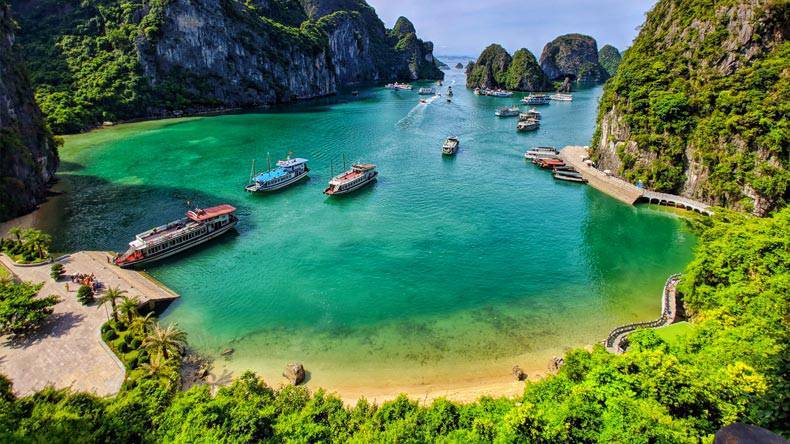Halong Bay Guide
THE SCIENCE OF HALONG BAY
Ha Long Bay, situated in the Gulf of Tonkin, includes some 1600 islands which form a spectacular seascape of limestone pillars. Because of their precipitous nature, most of the islands are uninhabited and relatively unaffected by human influence.
The geomorphology of Ha Long Bay is known as “drowned karst due to the unusual combination of its limestone karst features which have been subject to the repeated rise and fall of the sea over millions of years. The limestone formations of Ha Long Bay have been eroded into a mature landscape of fengcong (clusters of conical peaks) and fenglin (isolated tower features, modified later by the invasion of the sea. The smaller islands consist of fenglin towers that are 50m to 100m high. Many have vertical walls on all or most sides and these continue to evolve because of rock falls. The sea’s invasion of Ha Long Bay has added an extra element to the normal process of lateral undercutting of the limestone towers and islands. The most conspicuous feature of this erosion is the large notch cut into the entire rocky coastline, which can be seen from the air. Notches are a feature of limestone cliffs worldwide, but those of Ha Long Bay are exceptionally well developed and, at many sites, extend into arches and caves. This process of undercutting and subsequent erosion maintains the steep faces of the fenglin karst towers and thereby perpetuates the spectacular nature of the landscape.
Extensive limestone caves represent another important feature of Ha Long Bay, with three main types identified: old phreatic caves formed below the water table of the time; old karstic foot caves formed by lateral undercutting of cliffs at base level; and marine notch caves formed at sea level where rock structures are powerfully eroded and eventually reduced to a wave-cut platform.
A third distinctive feature of Ha Long Bay is the abundance of lakes within the larger limestone islands.
In summary, Ha Long Bay possesses a tremendous diversity of caves and other landforms which derive from the unusual geomorphological process of marine invaded tower karst.
